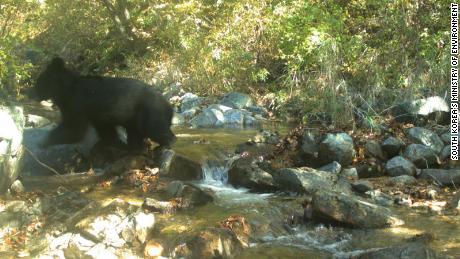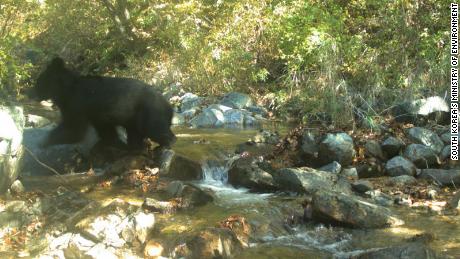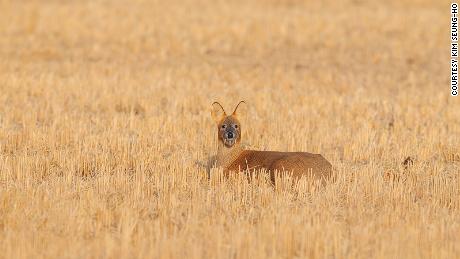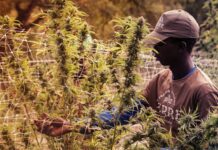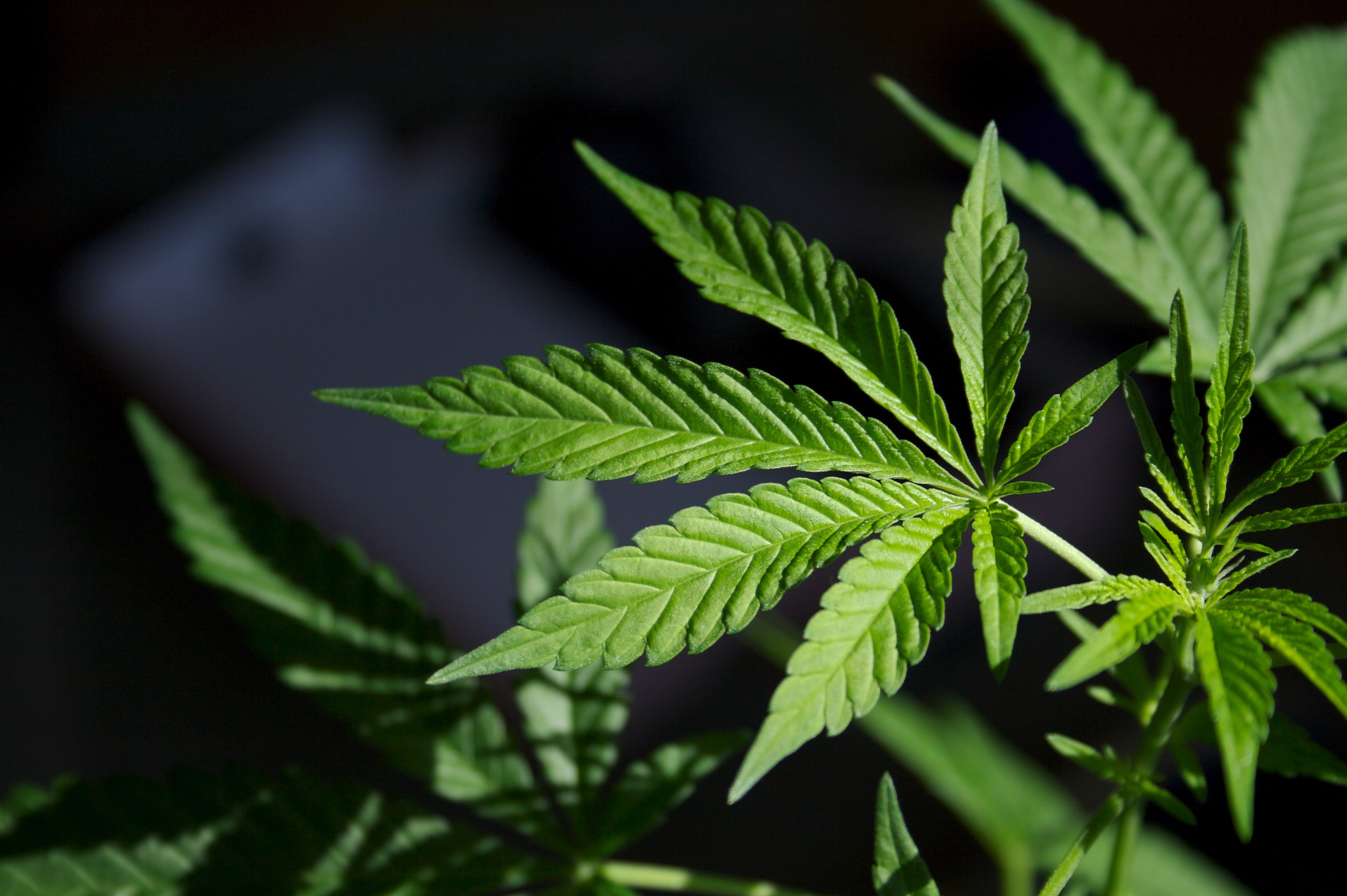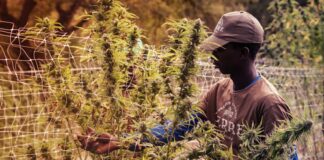A photo of the bear — which is classed as vulnerable under the International Union for Conservation of Nature’s Red List — was captured in the eastern area of the DMZ by an unmanned ecological study camera in October last year, the South Korean Ministry of Environment said in a press release Thursday.
The DMZ between North and South Korea is one of the most heavily armed borders — but it’s also become an unintended refuge for endangered species due to the restrictions in entering the area.
According to the press release, soldiers in the DMZ had claimed to have seen the bear in the past, but this was the first time a clear image of the bear had been captured in the area.
The bear snapped in the picture appears to between eight and nine months old, and weighs between 25 and 35 kilograms (55 to 77 pounds). Because it’s a young bear, authorities said it was likely there were at least three bears in the area, including its parents.
Since 2014, 92 unmanned cameras have been installed in the area which snap photos when they sense movement from a warm blooded animal.
South Korea’s Ministry of Environment designated the Asiatic Black bear as an endangered animal in 1998 and has been making efforts to increase population levels. In the press release Thursday, the ministry said it would expand the study of ecology and biodiversity of DMZ area and come up with comprehensive measures to preserve and manage wildlife in the DMZ.
Wildlife haven
Established in the 1953 Korean War Armistice Agreement, the DMZ is a 160-mile-long (257km) no-man’s land about 30 miles north of Seoul.
For over six decades, the area has been closed off from human interference, barred with fences and landmines all across the region.
Thanks to the restrictions, endangered species have been able to prosper in the area, including red-crowned cranes, white-naped cranes, mandarin ducks, musk deer, mountain goats and more.
There have even been reports of sightings of the critically endangered Amur leopard inside the DMZ.
According to the National Institute of Ecology of South Korea, there are about 6,000 different species of flora and fauna living inside the DMZ.
Views: 300


